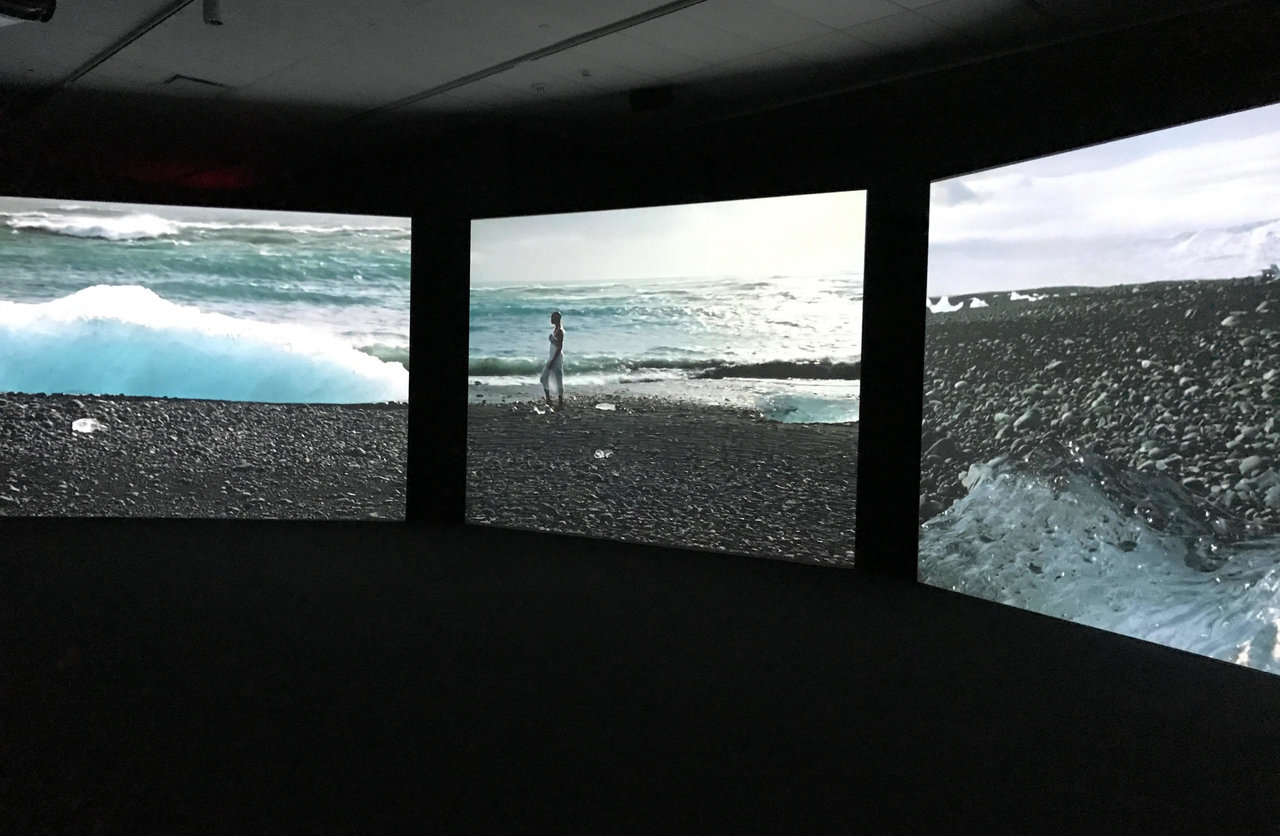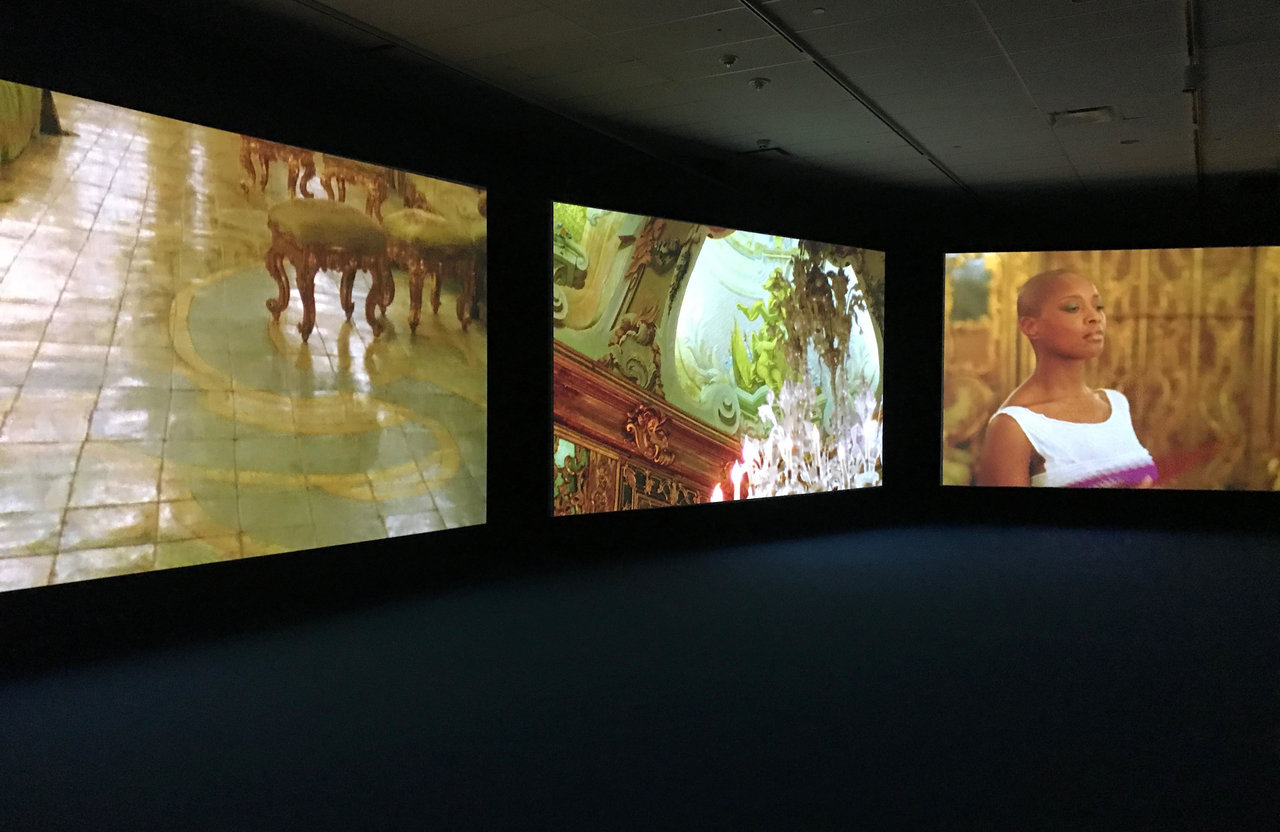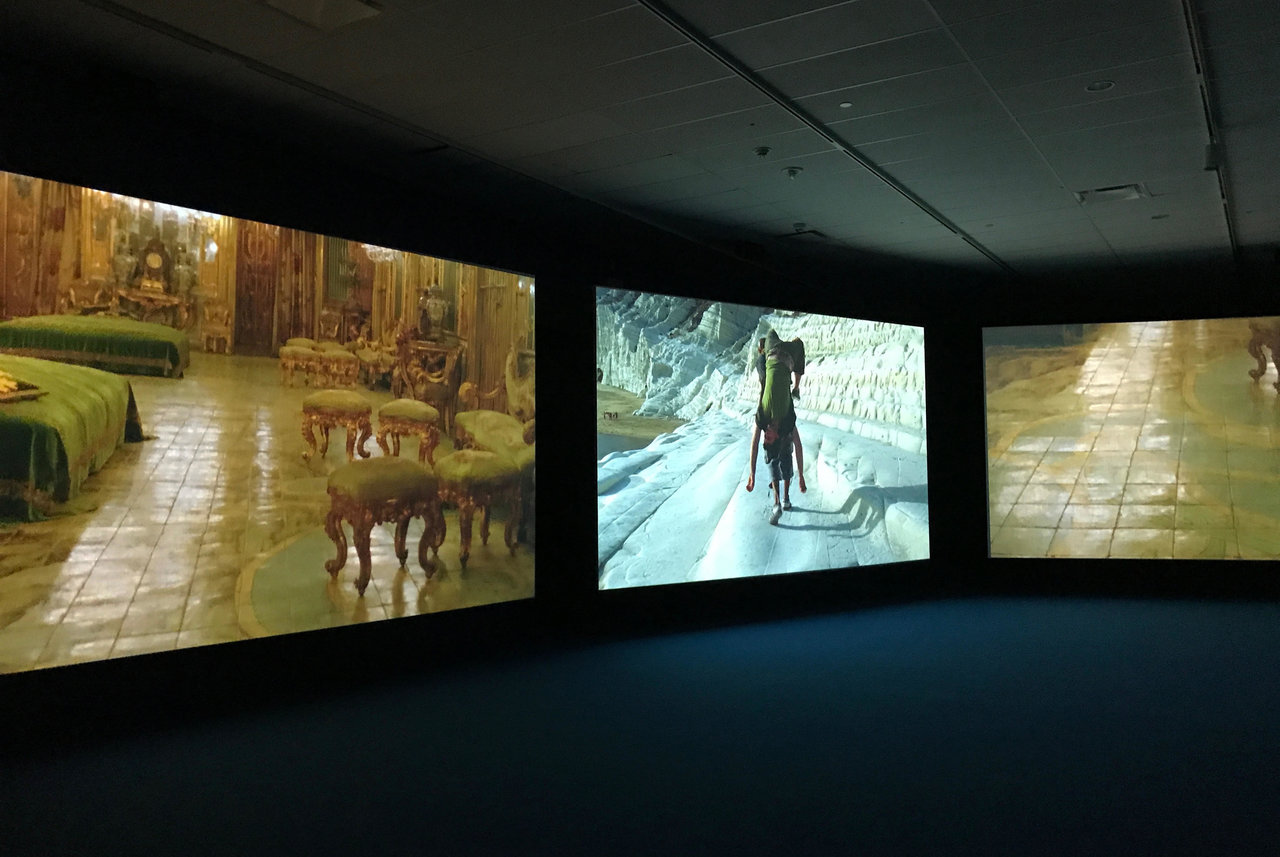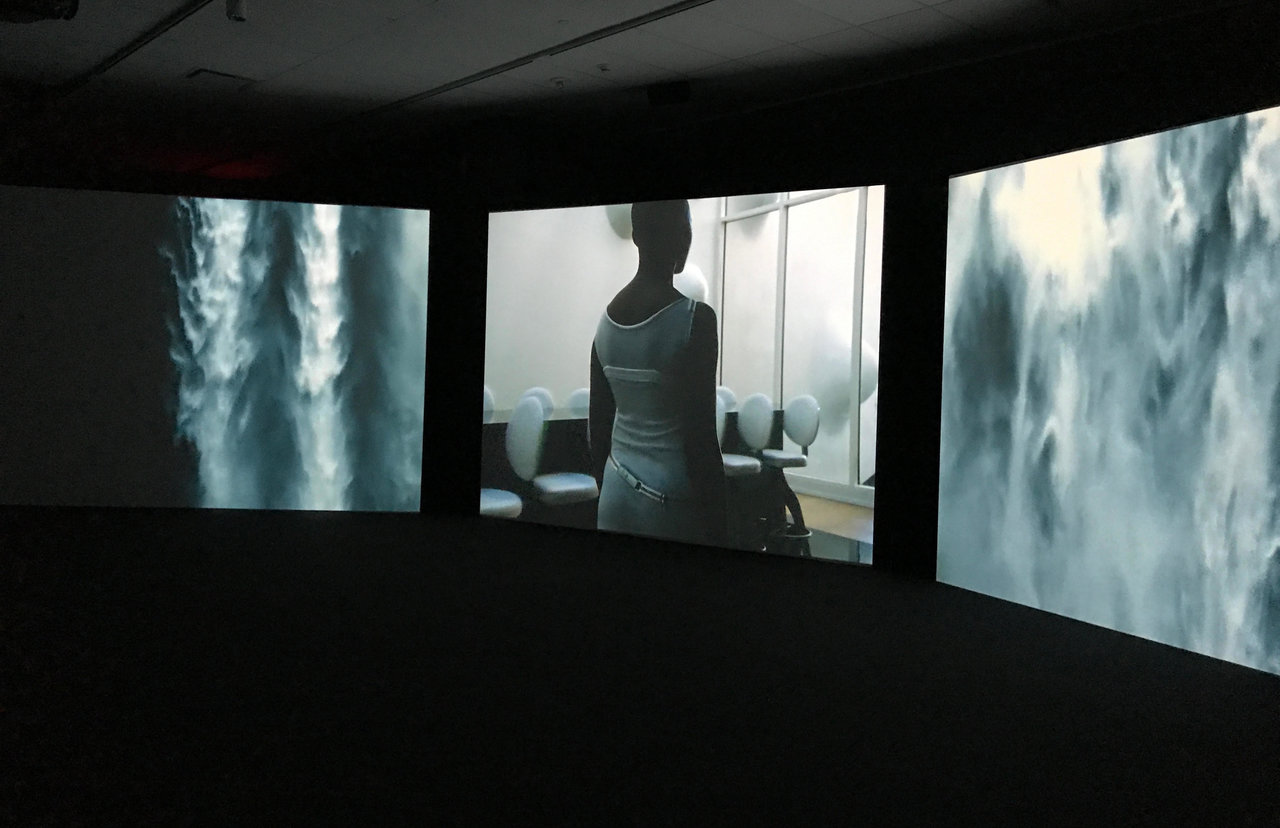The concept of space is explored as a physical location, a cultural, political or ethnic space and also as a place of displacement in many works by Isaac Julien—an award-winning British artist and filmmaker. The exhibition Isaac Julien: Other Destinies at the Royal Ontario Museum is curated by Dr. Silvia Forni—Curator of African Arts and Culture. It features two films from Julien’s multi-screen Expedition Trilogy. Western Union: Small Boats (2007) sheds light on the complex entanglement between Africa and Europe, and issues surrounding black diaspora, their identities, and migration. True North (2004) draws inspiration from the story of Robert Peary and Matthew Henson in the 1909 Polar Expedition, in which Julien evokes problems such as exploration, the impact of global warming, and displacement. Subjects explored in both films have strong contemporary relevance, thus this exhibition establishes its significance as it provokes thoughts and discourses surrounding some current events.
 Isaac Julien, True North, 2004, multi-screen film, Royal Ontario Museum, 2017. Photo: Yilong Liu
Isaac Julien, True North, 2004, multi-screen film, Royal Ontario Museum, 2017. Photo: Yilong Liu
The location of the exhibition greatly supports the context of the two films. It is installed in the Roman Gallery on the third floor, thus visitors go through rooms filled with western antiquity before they enter Julien’s exhibition. The artist himself appreciates the placement, as the art of the Roman Empire juxtaposes the space of contemporary Italy in Western Union: Small Boats. Both films are multi-screen and projected onto three large screens (six in total) in two separate rooms. The placement of the screens for each film is different and connected to the subject matter and the general sentiment of the film. To be specific, the three screens for Western Union are hung mid air, barely touching the ground thus reflecting the struggle and uncertainty of migration, and the lightness of the floating boats in vast sea. The three displays of True North are placed right on the floor, as if they are grounded by the subliminal scenes of nature, echoing the heaviness of the steps of the explorers.
 Isaac Julien, Western Union, Small Boats, 2007, multi-screen film, Royal Ontario Museum, 2017. Photo: Yilong Liu
Isaac Julien, Western Union, Small Boats, 2007, multi-screen film, Royal Ontario Museum, 2017. Photo: Yilong Liu
Julien’s aestheticization of histories makes his work outstanding with its uniqueness. In Western Union, he hired professional dancers to choreograph body movements that represent the physical struggles of migration. Their performance, highlighted with the presence of British actress Vanessa Myrie, create an experience that questions the Utopian and unreal fantasy that the migrants have about Europe. Through aestheticizing the bodies, their movements and the background, it becomes clear to the audience that this is not a real footage but a reiteration of history. Julien invites the viewer to think not only about the fact of migration, but also, the tropes that control its representation.
 Isaac Julien, Western Union, Small Boats, 2007, multi-screen film, Royal Ontario Museum, 2017. Photo: Yilong Liu
Isaac Julien, Western Union, Small Boats, 2007, multi-screen film, Royal Ontario Museum, 2017. Photo: Yilong Liu
It is safe to argue that Julien himself is aware of the issue of ‘realistic’ representation in documentary, and his refusal of it makes sense. He moves away from simple documentation and also deepens the idea of displacement through the appearance of Venassa Myrie in both pieces. As she appears in the central screen of Western Union, standing in the half-open metal gate of a palace, looking into distance; her confident and comfortable, yet almost ghostly, presence makes her both a witness and a survivor in the story of migrants, what Shelleen Greene calls a “survivor-witness” (a notion mentioned in Emma Chubb’s article titled: Small Boats, Slave Ship; or, Isaac Julien and the Beauty of Implied Catastrophe).
 Isaac Julien, Western Union Series No. 1 (Cast No Shadow), 2007. Duratrans image in lightbox, 120 x 120 cm. Courtesy the artist, Victoria Miro Gallery, London and Metro Pictures, New York.
Isaac Julien, Western Union Series No. 1 (Cast No Shadow), 2007. Duratrans image in lightbox, 120 x 120 cm. Courtesy the artist, Victoria Miro Gallery, London and Metro Pictures, New York.
In True North, her appearance in the landscape of Iceland is a visual and existential testament to the presence of black people in a space that was once deemed to be unsuitable for them to live in due to extreme coldness. Similar to Western Union, the highly aestheticized landscape, people and the subliminal nature constantly remind the audience that this is not a real footage nor a documentary for the Polar Expedition.
 Isaac Julien, True North, 2004, multi-screen film, Royal Ontario Museum, 2017. Photo: Yilong Liu
Isaac Julien, True North, 2004, multi-screen film, Royal Ontario Museum, 2017. Photo: Yilong Liu
Migration as a major theme in both Western Union and True North finds its contemporary resonance among the visitors. Julien’s work, although created years ago, invites the audience to think about migration as it is continue to persist and need to be addressed.
Yilong Liu
*Exhibition information: January 21 – April 23, 2017, Royal Ontario Museum, 100 Queen’s Park, Toronto. Museum hours: Mon – Sun, 10 am – 5:30 pm.
